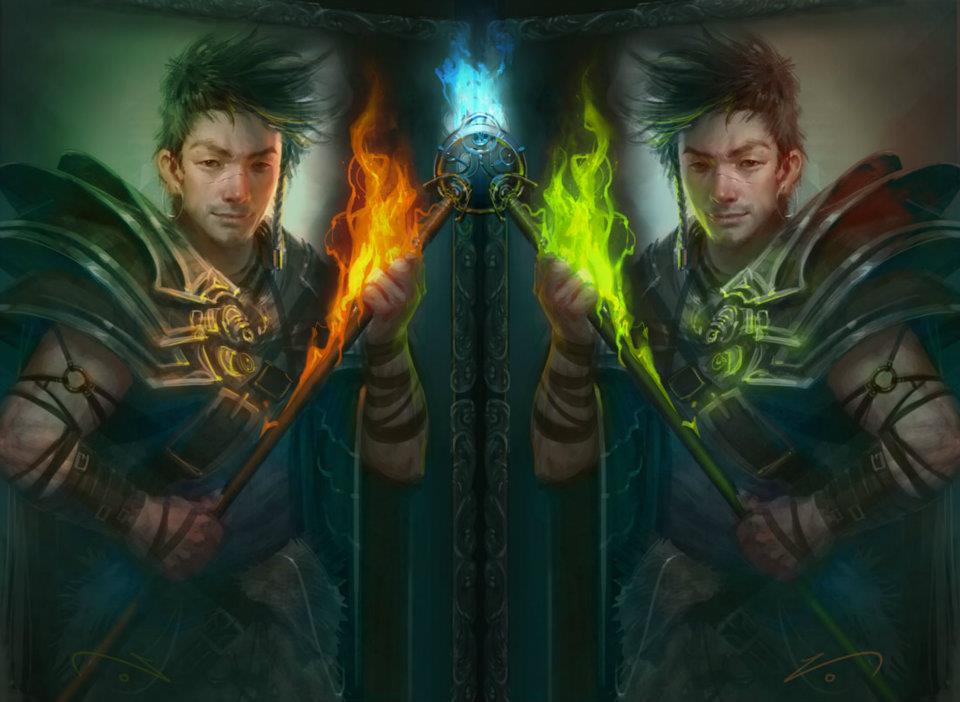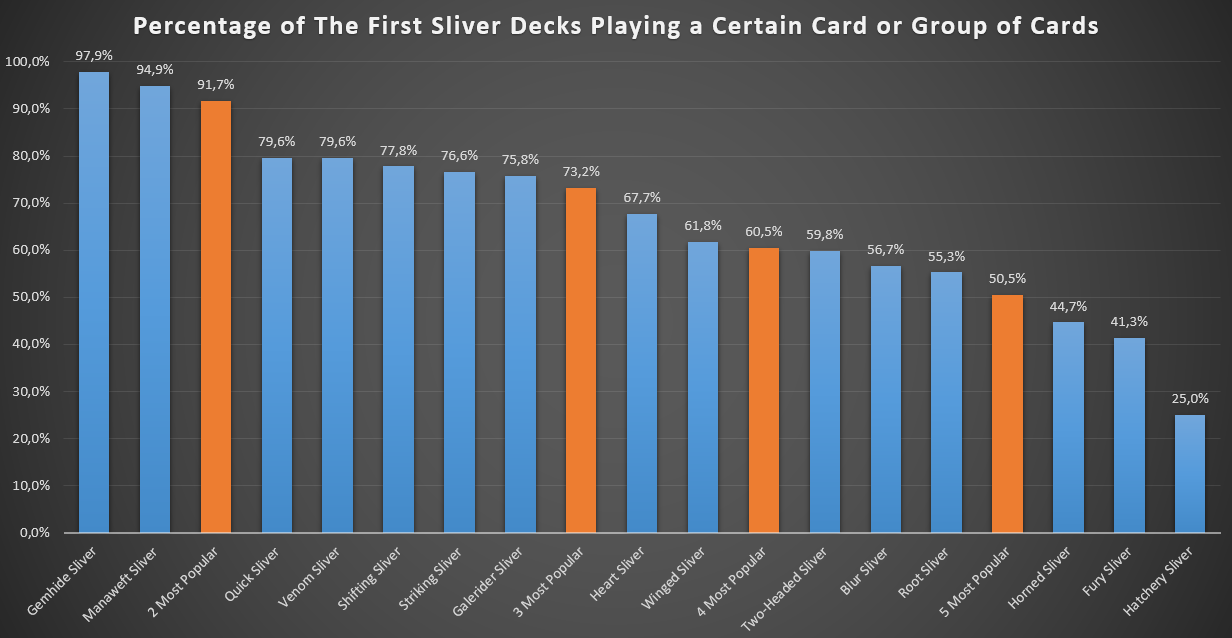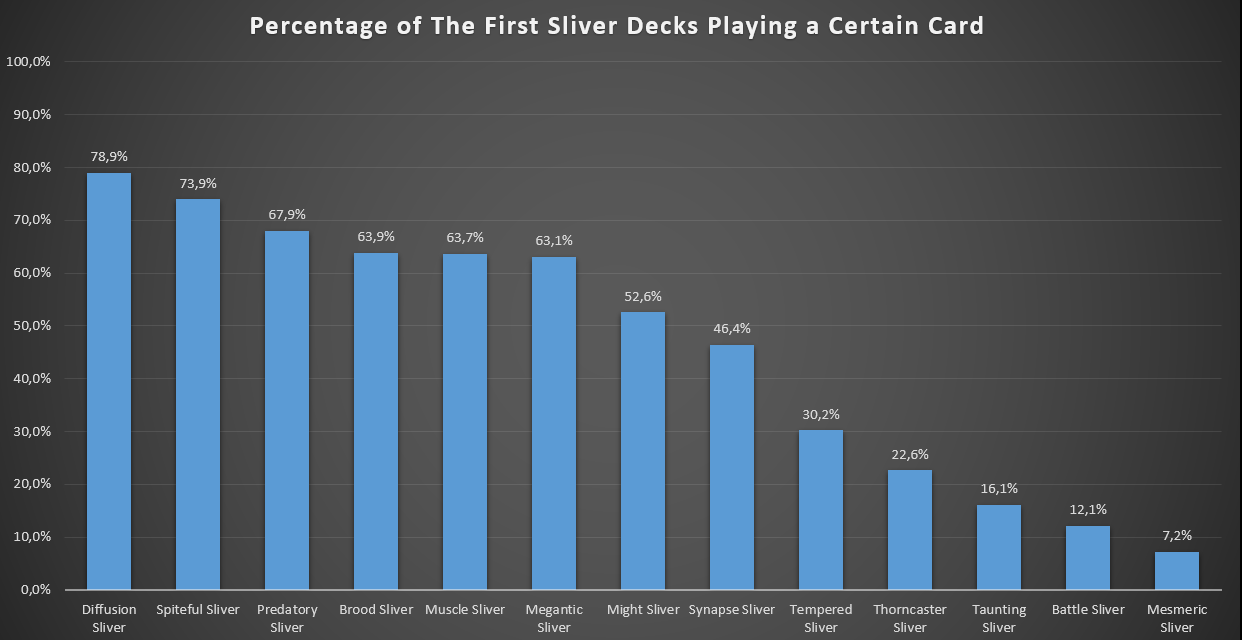Recross The Paths - Building a Slivers deck with Riku Of Two Reflections

(Riku of Two Reflections | Art by Izzy)
Swarm Tactics
Hello, everyone, and welcome back to Recross the Paths, the series that gives commanders a typal twist.
Just like last time, today we're talking about a commander who's been around since the early days of the format but has seen his popularity decreasing as time passed: Riku of Two Reflections. In particular our objective today is to build a more creature-centric deck around him while also offering a different take on an all-time favorite typal strategy that has become a bit boring in my opinion: Slivers. While I personally love this creature type (and one of the first decks I ever built was, in fact, a Sliver deck), it seems to me that every Sliver deck has become basically the same, reducing their innovation and surprise across the table.
Stage One: The Deck
Step One: The Swarm
We obviously have to talk about the Sliver-y members of our army first, and in particular we have to distinguish between two types of Slivers present in this list. On one hand we have cards like Galerider Sliver, Striking Sliver and Gemhide Sliver, which are more traditional creatures to include and that can grant useful abilities to all our Slivers, such as flying or first strike, or transform them into mana-producing creatures.
Among them, we can point out a number of different abilities that can be granted to our whole board, such as haste from Heart Sliver, Flash from Quick Sliver or double strike from Fury Sliver.
Nonetheless, none of these creatures really synergize with our commander: in fact, even if we were to copy them, we would only be adding bodies to the board without granting any additional abilities to our creatures. Given how the key to every Sliver strategy lies in transforming useless-on-their-own creatures into truly menacing beings through the power of the swarm, we want to use Riku to double up on effects that can actually stack if doubled. In other words, while cloning a Fury Sliver wouldn't modify the abilities granted to our creatures, doing so with a Muscle Sliver or a Predatory Sliver would actually benefit us, as we would get two instances of the +1/+1 effect to our board.
As a consequence, through our commander, we can copy mediocre-at-best effects, thus transforming them into powerful supports for our army, as multiple instances of the same triggered ability each trigger separately. This means that copying a Spiteful Sliver would allow all of our Slivers to shoot two times whenever they're dealt damage. On the same note, Tempered Sliver or Brood Sliver would get out of hand much quicker, as the first would grant two +1/+1 counter to every Sliver that deals damage to a player, while the second would spawn two additional creatures in the same scenario.
Of course, we'll gain even more value from abilities that are already good on their own. Cloning a Taunting Sliver basically means that we won't get attacked for the rest of the game while our opponents are forced to hit each other, while a double Synapse Sliver will draw us so many cards that we will spend quite a few minutes deciding what to discard to hand size. Last but not least, Thorncaster Sliver, when copied, will make sure we keep our opponents' boards clear or directly shoot down their life totals.
Step Two: Protection and Aggression
As any go-wide strategy that is looking to flood the board with a ton of creatures, we're extremely weak to board wipes, as they set us back a ton while also removing many of our powerful creatures. We need some reliable ways to prevent disasters from happening. So we run old classics like Heroic Intervention or Wrap in Vigor and newer tools such as Change of Plans to nullify mass removal spells, Asceticism to prevent targeted removals and Sword of Light and Shadow to grant us some recursion as well as protect one of our creatures from two removal-heavy colors.
On the other hand, we also want to take advantage of our crowded board to take over the game with damage: in doing so, Riku's first ability really comes in handy. In fact, being able to copy powerful pump spells such as Overwhelming Encounter or Overwhelming Stampede for as cheap as two mana can really mean we are ending games out of nowhere. Similarly, doubling up on below-average effects such as Atarka's Command or Gnawing Crescendo transforms them in more-than-legit powerful cards. Last but not least, a card as useful as Return of the Wildspeaker can only get absurdly good when copied.
Step Three: Strength In Numbers
Looking at typal synergies, we can understand that given how many creatures will be present on our board we can take advantage of powerful Anthem effects. In fact, our gameplay is centered on playing many creatures and making sure they're way bigger. This deck really makes the best out of cards like Door of Destinies or Vanquisher's Banner, which are already good on their own, but here will trigger over and over again. Also, while I admit Coat of Arms is a pet card of mine (and at times I include it in lists where it isn't really going to shine), in this environment it can really thrive.
As I just mentioned, we're looking to take advantage of Riku's first ability as well. We're looking at cards like For the Ancestors and Distant Melody to draw a lot of cards at instant speed, Kindred Charge to build an even bigger army, and Kindred Summons to straight up flood the board right before our turn and likely win the game during the following combat step.
Step Four: The Complete Decklist
Stage Two: The Data Room
We’re now on to the last part of this deck tech: the data room. Was this deck idea actually unique? Let's compare the list against both the average Riku deck and the average Sliver deck to see what we gained (and lost) in the process.
Step One: The Average Riku Deck
The days when Riku was a menace in the format are long gone, and this is exemplified by its lack of statistical popularity. In fact, he counts in 4,689 decks registered on EDHREC, which places him as the 203rd most popular commander overall and 7th among Temur colors.
All in all, the numbers obtained using EDHREC's filters on Riku's page are extremely clear. Today's main character has never been considered as a typal commander. In fact, out of all the creature type-matters cards present in our list, the most popular one is Kindred Charge, which only sees play in 57 out of the 4,689 decks mentioned before (roughly 1,2% of them).
This means that we're actually trying out something new with this commander, but also that we are missing out on a powerful strategy. In fact, while we are giving Riku a more structured theme and build direction, we're also giving up on its ability to copy big splashy spells and/or creatures, relying instead on a multitude of smaller attackers and on spells that really impact the game only if we already have somewhat of a board presence. Only time (and gameplay) will tell whether this exchange was for better or for worse, but one thing is sure: we're once again trailblazing and discovering new paths to shape some old commanders anew!
Step Two: The Average Sliver Deck
On the other hand, Slivers as a typal strategy are extremely popular, with The First Sliver being the most built commander in this sense, as it can count on 7.661 decks registered on EDHREC. As usual, let's see how how creatures performed when compared to the cream of the crop.
First off, I took into consideration the first group of Slivers mentioned in this article, which is to say those that we aren't really going to copy. What's really striking is the presence of a solid core of Sliver cards that are almost always present: Gemhide Sliver and Manaweft Sliver are basically auto-includes, standing at 98 and 95% inclusion rate respectively. Moreover, almost 92% of The First Sliver decks run both of them in the 99. Nonetheless, this core is effectively wider, as 73.2% of the decks include the three most popular Slivers (thus including Quick Sliver as well), 60.5% play Venom Sliver as well, and 50.5% decided to include the up-to-the-fifth most popular Sliver, which is Shifting Sliver.
On the other hand, only a few creatures don't see play in the majority of the decks: Horned Sliver hovers around 45% inclusion rate, Fury Sliver floats around the 41% mark and Hatchery Sliver stands at only 25% inclusion rate, maybe due to being only recently printed.
Next, we're going to look at those Slivers that are central to our strategy, but might not result as statistically popular in other dedicated decks.
We could divide the graph into two almost-equal parts. The first one includes the creatures between Diffusion Sliver and Might Sliver, which is to say those that are fairly popular in The First Sliver decks as well. These creatures obviously proved to be powerful enough to be included in the most built Sliver commander as well; being able to copy them and have two of them on the battlefield is for sure a powerful strategy. The latter part of the graph represents those Slivers that aren't quite as frequently played. Among them, Synapse Sliver is the one that surprises me the most, as card advantage is a crucial part of every Commander game. Moreover, Tempered Sliver is exactly one of those cards that has been commented on before: while on its own it's pretty slow to get going, when there are two of them on the battlefield, the number of +1/+1 counters starts to get out of control extremely fast.
Finally, while there are some points that demonstrate that it is indeed possible to innovate and create a new build for the Sliver archetype, it's also pretty clear how the core strategy of every Sliver deck seems predetermined. In fact, there's a staggering number of creatures that are played in around 70% of the dedicated decks, which means that if you were to play against a Sliver deck they would be present more often than not.
Takeaways from Today's Article
- Just like Kess last month, Riku is an old favorite that has been steadily pushed and power-creeped out of the format. The design of the card doesn't really give much of a direction to the decks it leads, so that it can easily turn into a win-more card, rather than an effective value engine. In other words while copying is costly, impactful spells is funny for sure, said spells would modify the course of the game even if they weren't copied. Hence, why shouldn't one play a commander that actively synergizes with those big spells rather than a copy effect in the command zone?
- For this reason, I think that Riku really needs a strong typal theme to justify its presence and, in particular, a typal theme that can generate long term value from the token copies it can create. As a consequence, Slivers seem a match made in heaven for our general: they are a very strong strategy that is synergic on its own but that can perfectly take advantage of multiple copies of certain key pieces.
- Lastly, while the pool of available Slivers is extremely large, the playable ones are always the same. This means that, while it seems like there is a lot of freedom and space for personalization in the building process, the number of flexible spots and personal decisions is pretty limited. Obviously, it would be possible to avoid all the auto-includes and play only the underrepresented Slivers, but would it actually be fun? While there is room for innovation and change, as shown in the last graph, the core of these decks seems so solid that it's hard to envision a completely innovative build of this archetype. Taking in consideration what was said in the previous point, I would consider this deck more of an innovation for Riku rather than for Slivers in general: in fact, having granted this general a more straightforward strategy might help it regain some popular favor.
That’s all from me for the moment. I hope you enjoyed this deck tech, but now it’s on to you! What do you think of it? Would you have changed anything? Is there something you particularly liked? Most importantly, do you believe this was a true innovation in Silvers? Let me know in the comments below!


EDHREC Code of Conduct